Oncolytic adenovirus-mediated MDA-7/IL-24 overexpression enhances antitumor activity in hepatocellular carcinoma cell lines
2010-07-07ChaoWenXiaoXinBoXueHuiZhangWeiGaoYuanYuKunChenJianWeiZhengandCongJunWang
Chao-Wen Xiao, Xin-Bo Xue, Hui Zhang, Wei Gao, Yuan Yu, Kun Chen, Jian-Wei Zheng and Cong-Jun Wang
Shanghai, China
Oncolytic adenovirus-mediated MDA-7/IL-24 overexpression enhances antitumor activity in hepatocellular carcinoma cell lines
Chao-Wen Xiao, Xin-Bo Xue, Hui Zhang, Wei Gao, Yuan Yu, Kun Chen, Jian-Wei Zheng and Cong-Jun Wang
Shanghai, China
BACKGROUND:Melanoma differentiation-associated gene-7 (MDA-7)/interleukin-24 (IL-24) is a novel tumor suppressor gene, which has suppressor activity in a broad spectrum of human cancer cells. We investigated the effect of the replication-competent oncolytic adenovirus SG600-IL24 and replication-incompetent adenovirus Ad.IL-24, both expressing human MDA-7/IL-24 on the hepatocellular carcinoma cell lines HepG2, Hep3B, SMMC-7721, HCCLM3, and the normal liver cell line L02.
METHODS:Hepatocellular carcinoma cell lines and the normal liver cell line were infected with SG600-IL24 and Ad.IL-24. The mRNA and protein expression of MDA-7/IL-24 in infected cells was confirmed by RT-PCR, ELISA, and Western blotting. MTT assay was used to investigate the proliferation effect. Hoechst staining and Annexin-V and PI staining were performed to study the MDA-7/IL-24 gene expressed in HCC cell lines and the normal liver cell line. Flow cytometry was used to analyse the cell cycle.
RESULTS:RT-PCR, ELISA and Western blotting confirmed that the exogenous MDA-7/IL-24 gene was highly expressed in cells infected with SG600-IL24. MTT and apoptosis detection indicated that SG600-IL24 induced growth suppression, promoted apoptosis, and blocked cancer cell lines in the G2/M phase in hepatocellular carcinoma cell lines but not in the normal liver cell line.
CONCLUSIONS:SG600-IL24 selectively induces growth suppression and apoptosis in hepatocellular carcinomacell linesin vitrobut not in the normal liver cell line L02. Compared with Ad.IL-24, SG600-IL24 dramatically enhances antitumor activity in hepatocellular carcinoma cell lines.
(Hepatobiliary Pancreat Dis Int 2010; 9: 615-621)
melanoma differentiation-associated gene-7; interleukin-24; oncolytic adenovirus; hepatocellular carcinoma; gene therapy
Introduction
Melanoma differentiation-associated gene-7 (MDA-7), renamed interleukin-24 (IL-24), was identified by Fisher in 1995 through combination of recombinant fibroblast interferon-β and protein kinase C activator mezerein subtraction hybridization.[1]MDA-7/IL-24 can induce growth inhibition and apoptosis in melanoma and other types of cancer cell.[2-5]It was hailed as a novel and interesting development in experimental tumor therapy in the early 21st century.[6]Our previous studies show that Ad.IL-24 selectively destroys a variety of liver cancer cells without any toxic effects and growth inhibition of the normal liver cell line L02. Ad.IL-24 facilitates the release of CytC and Smac from the mitochondria to the cytoplasm, independent of the Fas pathway.[7]MDA-7/IL-24 also inhibits the growth and metastasis of high-transfer (HCCM6) liver xenograft tumors, with synergistic effect when combined with doxorubicin. However, the replication-defective adenovirus has poor targeting, low transfection efficiency, low gene expression effect, and severe immune reaction, therefore limiting its further application to cancer gene therapy. The oncolytic adenovirus, a non-defective virus, has been found to be capable of higher transfection efficiency because the exogenous gene can selectively replicate in tumor cellsand lyse them, with almost no effect on normal cells.[8]Therefore, we used this strategy to construct replicationcompetent oncolytic adenovirus SG600-IL24 which carries human MDA-7/IL-24. Four kinds of liver cancer cell lines and the normal liver cell line were infected to assess gene expression, cell growth inhibition, and cytotoxicity in different cells.
Methods
Cell lines and culture conditions
The HCC cell lines HepG2, Hep3B, SMMC-7721, and HCCLM3 and the normal human liver cell line L02 were from the Institute of Liver Cancer of Fudan University. The cell lines were cultured in high glucose DMEM (HyClone, USA) supplemented with 10% FBS (Gibco, USA). SMMC-7721 and L02 were cultured in RPMI-1640 (HyClone, USA) supplemented with 10% FBS. All cell lines were cultured at 37 ℃ in a 5% CO2 humidified incubator.
Virus construction and production
Ad.IL-24 was constructed as in our previous work.[9]The oncolytic adenoviruses SG600-IL24 and SG600-EGFP were constructed and amplified as previously described. The IL-24 expression cassette was released from pZD55-IL-24 and introduced into pClon9-INS to produce pClon9-INS-IL24. Using a plasmid transfection method, we co-transfected the pSG600-IL24 and adenovirus skeletal plasmid pPE3 into HEK293 cells to construct the recombinant adenovirus vector SG600-IL24, which carried the mda-7 gene, by intracellular homologous recombination. The genomes were analyzed to confirm the recombinant structure and then the virus was plaque purified and amplified in HEK293 cells. The virus titers were determined by TCID50 assay in HEK293 cells. The titer of SG600-IL24 was 2.25× 1010PFU/ml, SG600-EGFP was 2.79×1010PFU/ml, and Ad.IL-24 was 7.1×109PFU/ml; they were stored at -80 ℃.
Reagents
RT-PCR kit (Takara, Japan), enzyme-linked immunosorbent assay (ELISA) kit (R&D Systems, Minneapolis, MN, USA), MTT (Sigma, St. Louis, MO, USA), Hoechst33258 reagent (Sigma), Annexin-V/PI kit (Sigma), and anti-MDA-7/IL-24 (Abcam, UK).
Virus infection
Six-well plates for each cell line were divided into 4 groups: control, Ad.IL-24, SG600-EGFP and SG600-IL24; the control group was treated with serum-free DMEM. The oncolytic adenovirus infected the cells at a MOI (multiplicity of infection, MOI) of 10.
Expression of MDA-7/IL-24 determined by RT-PCR
Cells were harvested 24 hours after SG600-IL24 infection to determine mRNA expression of MDA-7/ IL-24. Total RNA was extracted and RT-PCR was performed as previously described. The sequences of primers of MDA-7 mRNA were: sense, 5'-GGG CTG TGA AAG ACA CTA T-3', antisense, 5'-GCA TCC AGG TCA GAA GAA-3'. The length of amplified fragment was 381bp. The sequences of primers of β-actin were: sense, 5'-CCT TCC TGG GCA ATG GAG TCC T-3', and antisense, 5'-GGA ACA ATG ATC TTG ATC TT-3'. The length of amplified fragment was 201bp. Reaction mixtures with corresponding primers were amplified under the following conditions: denaturation at 94 ℃ 5 minutes; denaturation at 94 ℃ 30 seconds, annealing at 56 ℃ 30 seconds, and extension at 72 ℃ 45 seconds for 30 cycles; then extension at 72 ℃ 10 minutes to ensure full extension of the product. The amplified products were visualized by electrophoresis on a 1% agarose gel.
Detection of IL-24 by ELISA
Two-antibody sandwich ELISA was developed for detection of human MDA-7/IL-24. The antibodies used were monoclonal mouse anti-human IL-24 (R&D Systems), and peroxidaseconjugated rabbit anti-goat IgG (R&D Systems). The cell culture supernatant was collected at 24 hours, 48 hours and 72 hours and stored at -20 ℃. The concentrations of MDA-7/IL-24 in the supernatant at different times were evaluated by ELISA. The absorbance was read at 450 nm. The concentration of IL-24 was evaluated with a standard curve.
MTT assay to determine cell growth
The cells were seeded into 96-well tissue culture plates (1×103cells per well), and treated with PBS, 10 MOI of Ad.IL-24, SG600-EGFP, or SG600-IL24 the next day. After cultivation for 24 hours, the medium was removed, and fresh medium containing 0.5 mg/ml MTT was added to each well. The cells were incubated at 37 ℃for 4 hours, and then the supernatant was removed, and about 150 μl dimethylsulfoxide was added to each well and cells incubated for another 10 minutes at 37 ℃with gentle shaking. Absorbance was read on a Bio-Rad microplate reader at 595 nm.
Western blotting analysis
Cell lines were cultured in 6-well plates, and cells receiving different treatments were collected at theindicated times. Forty-eight hours later the cells were collected and suspended in lysis BCA method for protein quantitation. A total of 25 μg of proteins was applied to 15% SDS-PAGE and transferred to polyvinylidene fluoride membranes. The membranes were probed with polyclonal antibodies to MDA-7/IL-24 and β-actin, then the corresponding fluorescent secondary antibody hybridization, and finally the second antipolyvinylidene fluoride membrane fluorescence signal was detected with infrared imaging systems.
Hoechst33258 staining
Forty-eight hours after infection, cells were washed twice with PBS and fixed in 1 ml of 4% paraformaldehyde for 10 minutes at 4 ℃. After two washes with PBS, each well was stained with 100 μl Hoechst33258 in PBS for 15 minutes in the dark at room temperature, and then 1000 cells were counted under a fluorescence microscope. Nuclear fragmentation was visualized using a fluorescence microscope (TE2000-U, Nikon, JPN). Apoptotic cells were identified by condensation and fragmentation of nuclear chromatin.
Fluorescence-activated cell sorter (FACS) analysis
Cells were harvested 48 hours after administration, trypsinized and washed twice with complete media 48 hours later. Aliquots of cells (1×106) were resuspended in 500 μl binding buffer and stained with 5 μl fluorescein isothiocyanate (FITC)-labeled annexin-V according to the manufacturer's instructions. Propidium iodide (PI, 5 μl) was added to the samples after staining with annexin-V, and then put in the dark for 30 minutes. Flow cytometry (BD, FACSCalibur, USA) was performed immediately after staining.
Cell-cycle analysis
Cells were cultured as previously, and after reaching 30% confluence they were treated with DMEM without fetal bovine serum (FBS) for 24 hours for synchronization. The cells were divided into 4 groups: DMEM, Ad.IL-24, SG600-EGFP, and SG600-IL24. Forthy-eight hours later, the cells were harvested using trypsin and the cell concentration adjusted to l×106/ml. After the cells were fixed in 70% cold ethanol overnight at -20 ℃, they were washed with phosphate buffered saline (PBS), and aliquots of 1×106cells were resuspended in 1 ml PBS containing 1 mg/ml of RNase A and 0.5 mg/ml PI. After 30 minutes of incubation, the cells were analyzed by flow cytometry using a FACScan flow cytometer (BD, FACSCalibur, USA). The treated cells were evaluated by FACS analysis for identifying the cells at different stages of the cell cycle. The percentages of G0/G1, S, and G2/M stage cells were determined using multicycle software and the results analyzed using analysis of variance.
Statistical analysis
All analyses were performed with SPSS14.0 software. All the experiments were performed at least for three times. Results are expressed as mean±SD. Statistical comparisons were made using analysis of variance. APvalue less than 0.05 was considered statistically significant.
Results
SG600-IL24 mediated ectopic MDA-7/IL-24 expression in cells
The expression of MDA-7/IL-24 mRNA was markedly upregulated in the normal liver cell line (L02) as well as in the different metastatic potential HCC cell lines (HepG2, Hep3B, SMMC-7721, and HCCLM3) that were infected with SG600-IL24. In contrast, cells infected with Ad.IL-24, SG600-EGFP, and DMEM expressed very low levels of MDA-7/IL-24 (Fig. 1).
Detection of MDA-7/IL-24 in supernatants by ELISA

Fig. 1. Expression of MDA-7/IL-24 mRNA in a variety of HCC cell lines and normal liver cell line. A: Lanes 1-4, Ad.IL-24, SG600-EGFP, control, and SG600-IL24 groups, respectively. B: corresponding β-actin.

Fig. 2. Protein expression of MDA-7/IL-24 after SG600-IL24 transfection into HCC cell lines and normal liver cell line. Lanes 1 and 6, control; lane 2, Ad.IL-24 group; lane 7, SG600-EGFP group; lanes 3-5, HepG2, Hep3B, and SMMC-7721 SG600-IL24 groups, respectively; lanes 8 and 9, HCCLM3 and L02 SG600-IL24 groups, respectively.
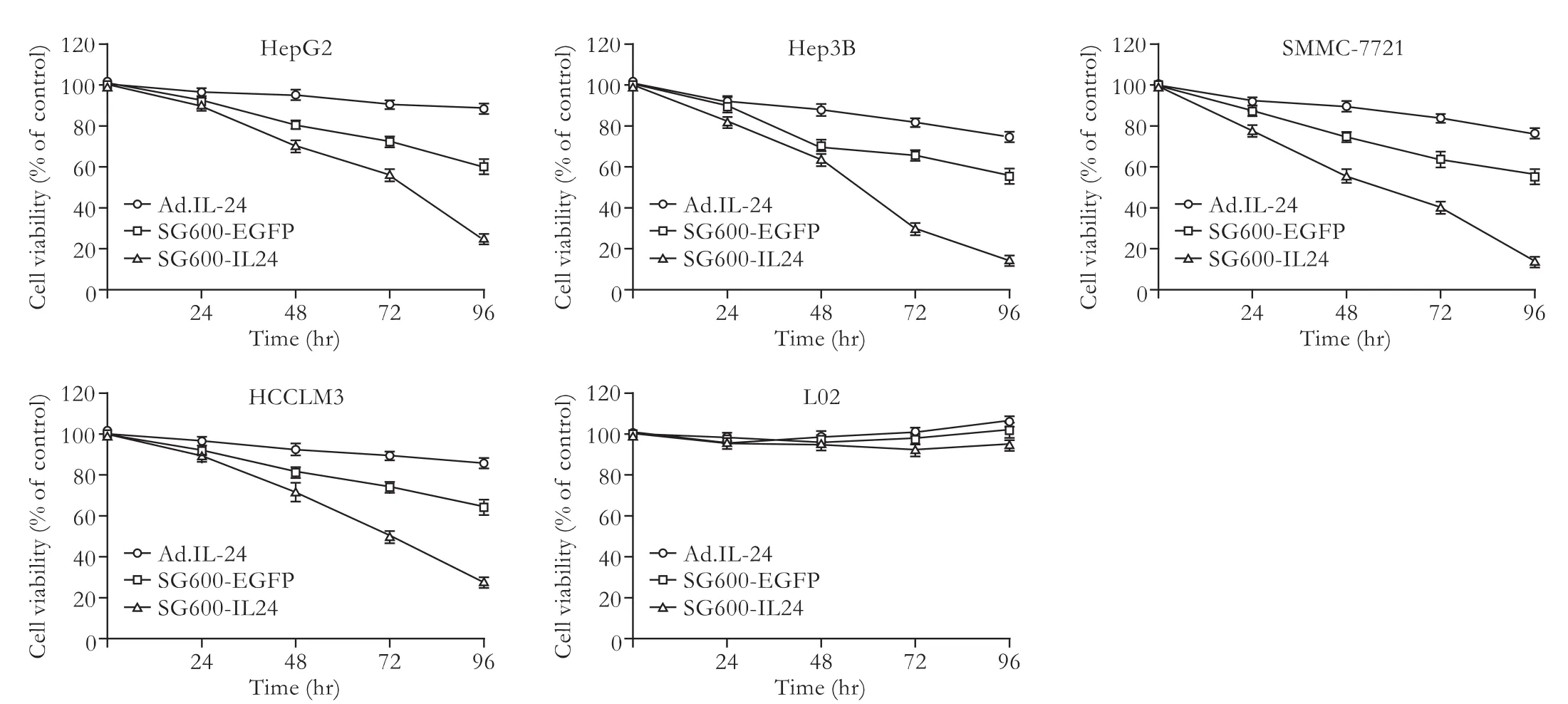
Fig. 3. Cell viability of different HCC cell lines and normal liver cell line infected with the oncolytic adenovirus SG600-IL24 and replication-incompetent adenovirus Ad.IL-24 measured by MTT assay at 24, 48, 72 and 96 hours postinfection. Results are presented as mean±SD (n=5) and are expressed as a percentage relative to the DMEM-treated control cells. Data are presented as mean±SD of three independent experiments.
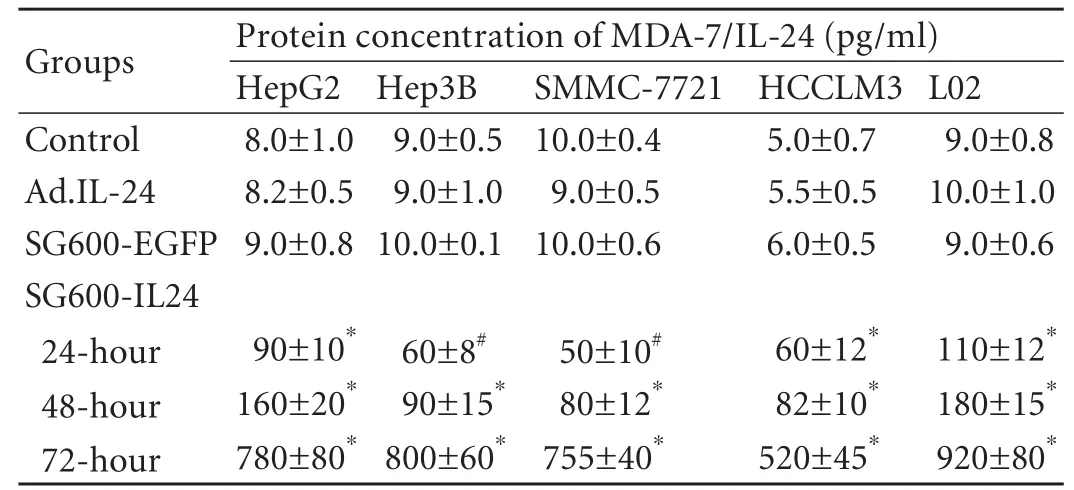
Table 1. Protein concentrations of MDA-7/IL-24 in different HCC cell lines and normal cell line (pg/ml)
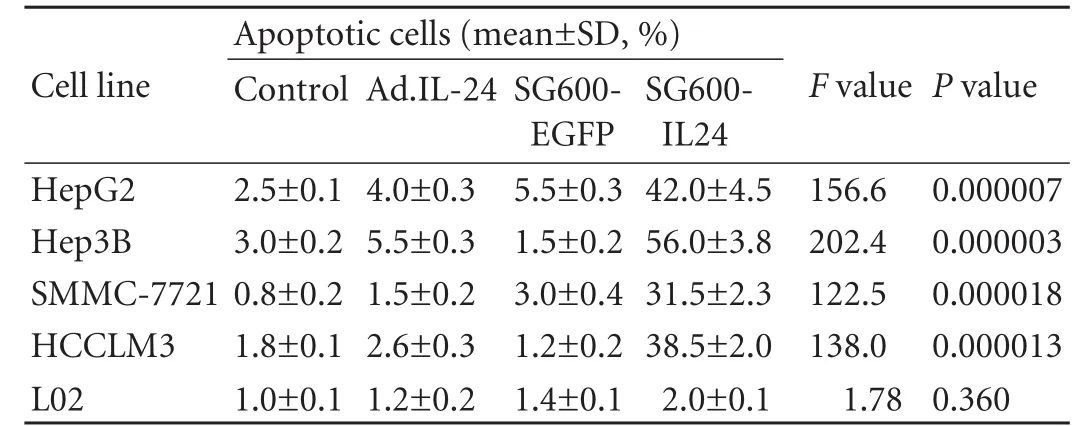
Table 2. Analysis of apoptosis by Hoechst staining
In SG600-IL24-treated cells, the concentrations of MDA-7/IL-24 protein in supernatants increased in a time-dependent manner. Endogenous MDA-7/IL-24 expression was not detected in cells treated with SG600-EGFP and control groups (Table 1).
Protein expression of MDA-7/IL-24 by Western blotting
Five cells in the control, Ad.IL-24 and SG600-EGFP groups had no MDA-7/IL-24 protein expression, but transfection of the oncolytic adenovirus SG600-IL24 showed very high expression of MDA-7/IL-24 48 hours later (Fig. 2).
Growth suppression and viability assays
To investigate whether SG600-IL24 inhibits cell proliferation, HCC cells HepG2, Hep3B, SMMC-7721, HCCLM3 and the normal liver cell line L02 were infected with SG600-IL24, and proliferation and cell viability were determined by MTT. There was no proliferation arrest effect in normal liver cell line L02, regardless of treatment with DMEM, Ad.IL-24 or SG600-EGFP. However, the anti-proliferative activity of SG600-IL24 was readily apparent in HCC cell lines HepG2, Hep3B, SMMC-7721, and HCCLM3; the inhibition ratios were 75±2.5%, 85±2.0%, 86±3.5%, and 72±1.8%, respectively (Fig. 3).
SG600-IL24 induced apoptosis in HCC cell lines as assessed by Hoechst staining
Hoechst staining showed that SG600-IL24 induced apoptosis in human HCC cells lines HepG2, Hep3B, SMMC-7721, and HCCLM3 (Table 2). SG600-IL24-mediated apoptosis in HCC cell lines was higher than in the other groups (HepG2:F=156.6,P<0.05; Hep3B:F=202.4,P<0.05; SMMC-7721:F=122.5,P<0.05;HCCLM3:F=138.0,P<0.05). These data indicated that SG600-IL24 induced apoptosis in HCC cell lines. In contrast, there were no apparent changes in the normal liver cell line L02, where the rates of apoptosis were 1.0%, 1.4%, 1.2% and 2.0%, respectively (F=1.78,P>0.05).
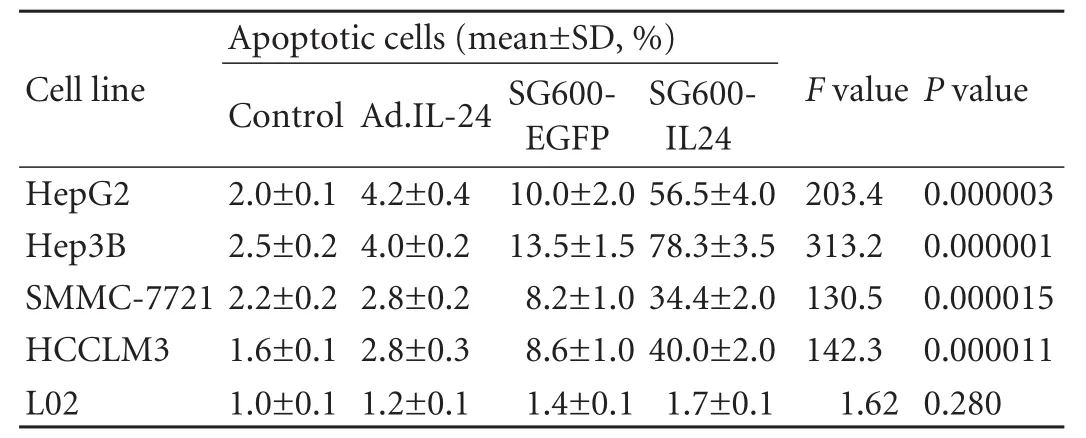
Table 3. Analysis of apoptosis in HCC cell lines by flow cytometry
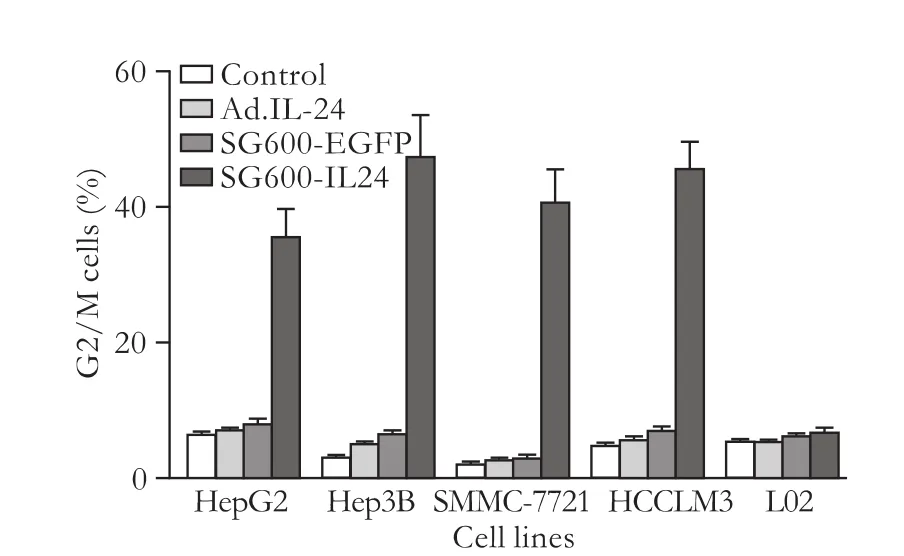
Fig. 4. SG600-IL24 induces G2/M arrest in HCC cell lines.
Apoptosis affected assay by flow cytometry
Annexin-V and PI staining assays with flow cytometry quantified the effect of SG600-IL24 on apoptosis induction in the HCC cell lines HepG2, Hep3B, SMMC-7721, HCCLM3 and the normal liver cell line L02. The percentage of apoptosis in HCC cell lines increased significantly in the SG600-IL24-infected compared to the control, SG600-EGFP, and Ad.IL-24 infected cells (HepG2:F=203.4,P<0.05; Hep3B:F=313.2,P<0.05; SMMC-7721:F=130.5,P<0.05; HCCLM3:F=142.3,P<0.05) (Table 3). When compared L02 with HCC cell lines, the apoptosis rate was only increased by 0.75%, demonstrating that SG600-IL24 infection can kill HCC cell lines but not normal liver cell line.
Cell cycle analysis by flow cytometry
Cell cycle phases assayed with flow cytometry showed that SG600-IL24 induced a G2/M accumulation in HepG2, Hep3B, SMMC-7721, and HCCLM3 carcinoma cell lines compared with the control, Ad.IL-24 and SG600-EGFP groups (P<0.05; Fig. 4). The rates of G2/M phase were 35.4±4.2%, 47.3±6.2%, 40.5± 5.0%, and 45.5±4.0% respectively. However, the rates of G2/M phase in the L02 cell line were 5.5±0.3%, 5.6± 0.2%, 6.3±0.4%, and 6.8±0.7%, respectively (P>0.05). These results showed that SG600-IL24 infection induced an increase in the G2/M proportion of the cell cycle in HCC cell lines but not in normal liver cell lines.
Discussion
Hepatocellular carcinoma (HCC) is one of the highest malignant tumors. The annual morbidity and mortality associated with HCC are the second highest among tumors.[10]In addition, HCC is characterized by poor prognosis. To address this, cancer gene therapy has been on the rise. Recently, sorafenib has been approved for clinical application.[11]However, its actual effects are still being examined. Genes or drugs that can treat tumor cells whetherin vivoor specific to metastatic tumor cells, without any toxic effects to normal cells, are essential to the treatment of liver cancer and other tumors.
MDA-7/IL-24, IL-24, is a new member of the IL-10, class-II family of cytokines. Studies have found that MDA-7/IL-24 not only induces growth inhibition of melanoma cells but also facilitates growth suppression and apoptosis in a broad range of carcinoma cell lines, such as those of ovarian cancer,[12,13]and carcinomas of the lungs,[14,15]breast,[16]pancreas,[17]glioma,[17,18]prostate[19]and colon[20]among others. Studies have likewise indicated that increased expression of the IL-24 gene suppresses growth and induces apoptosis in a variety of cancer cells with single or multiple genetic defects, including alterations in p53, p16/INK4a, and Rb.[21,22]
Gene therapy for liver cancer is a current research focus; most of the reported methods are not tumorspecific but affect normal cells, which limits their clinical application. Gene therapy that is capable of selectively curing tumor cells without affecting normal cells can be explored.[23]In this study, an oncolytic adenovirus, with the characteristics of antitumor activity and proliferation and replication in tumor cells specifically, was used as a carrier. These oncolytic adenoviruses can make the exogenous gene copy thousands of times and enhance the effect of the anticancer gene in a similar manner, ultimately killing tumor cells for therapeutic purposes.[24]Tumor-specific oncolytic adenovirus vectors have the capability to cure specific infections of tumor cells, amplify in a large number of infected cells, and dissolve tumor cells. Therefore they are promising gene therapy vectors with anti-tumor effects.[25]In this study we constructed adenovirus SG600-IL24, which has E1B 55 kDa defective oncolytic adenovirus (ZD55). It replicates in tumor cells and causes a significant cytotoxic effect, whilenormal cells show little or no toxicity.[26]SG600-IL24 was constructed by oncolytic adenovirus SG600 vector which has the telomerase reverse transcriptase promoter (TERTp), and hypoxia regulatory element (HRE) controls the adenovirus proliferation genes E1a and E1b. It deletes the E1a gene, which promotes virus-specific replication in tumor cells, therefore it has enhanced effectiveness and safety for gene therapy.[27]
In contrast to the replication-incompetent adenovirus Ad.IL-24, the oncolytic adenovirus can replicate in and lyse tumor cells exclusively, inducing a high expression of MDA-7/IL-24 in these cells. This high expression of MDA-7/IL-24 can selectively kill cancer cells simultaneously. Moreover, when the oncolytic adenovirus selectively kills tumor cells, MDA-7/IL-24 can be released to the blood, indicating a potent "bystander" antitumor activity.[28]It can also kill distant micrometastatic lesions resulting from radical treatment.
SG600-IL24 was utilized as a vector. RT-PCR, ELISA, and Western blotting demonstrated that MDA-7/IL-24 was successfully transfected into the HCC cell lines and normal liver cell line. The control group and the SG600-EGFP group did not express the MDA-7/IL-24 gene and protein. Although the SG600-IL24 group comprising five kinds of cell lines expressed the MDA-7/ IL-24 protein, the effects were different. ELISA results showed that the expression of secreted and intracellular MDA-7/IL-24 proteins increased in a time-dependent manner in the SG600-IL24 group. This indicates that the enhanced killing was due to increased MDA-7/ IL-24 protein expression. At the same time, the rate of apoptosis increased with time. These findings suggest that there is a positive correlation between time and the protein concentration after SG600-IL24 was infected into the HCC cell lines. Flow cytometry results showed that SG600-IL24 significantly inhibited the growth of tumor cells, promoted the apoptosis of tumor cells, and blocked tumor cells in the G2/M phase. Normal L02 liver cells were not affected although an increase in G2/M phase by 1.3% was observed. Annexin-V and PI staining by flow cytometry showed that the early and late apoptosis rates in HepG2, Hep3B, SMMC-7721, and HCCLM3 were 56.59%, 78.36%, 34.46%, and 40.03%. The apoptosis rate was only 0.75% in the normal liver cell line L02. These results demonstrated that SG600-IL24 did not promote apoptosis in the normal liver cell line. MTT and Hoechst33258 staining results suggested that SG600-IL24 promoted apoptosis and induced the killing effect in a variety of different HCC cell lines with metastatic potential but not in the normal liver cell line L02. These effects showed stronger antitumor activity than the replication-incompetent adenovirus Ad.IL-24, which showed little or low killing capacity under the same conditions.
The HCC cell line HepG2 is a wild type in the gene p53 and a mutant type in the gene Rb. Hep3B is a line with the p53 gene deleted. HCCLM3 is a mutant type in the gene p53.[29-32]Although these lines have different gene types, they induce apoptosis and growth arrest by infection with SG600-IL24. The results demonstrated that SG600-IL24 killed several kinds of tumor cells independent of the state of p53. Hep3B is a line without metastatic potential. In comparison, HCCLM3 and SMMC-7721 are lines with high metastatic potential. Research has shown that HCCLM3 is a strong metastatic line which can develop liver cancer metastasis in 100% of nude mice.[29-32]Therefore, SG600-IL24 can facilitate HCC cell lines with different metastatic potential.
In conclusion, SG600-IL24 can induce growth suppression, promote apoptosis, and block cancer cell lines in the G2/M phase in HCC cell lines without any toxic effect on normal liver cell line lines. In contrast with Ad.IL-24, SG600-IL24 enhances antitumor activity in HCC cell lines dramatically. These findings provide support for future clinical applications of MDA-7/IL-24 in the gene therapy of HCC. Therefore, the strategy called targeted gene-virotherapy is an efficient approach in anticancer therapies.
Acknowledgements
We thank Virginia Commonwealth University Professor Paul B. Fisher for his instruction and encouragement. We are also grateful to Qi-Jun Qian of Shanghai Eastern Hepatobiliary Surgery Hospital for his guidance on virus construction and laboratory techniques.
Funding:This work was supported by a grant from the National Natural Science Foundation of China (30872510).
Ethical approval:Not needed.
Contributors:WCJ and ZH proposed the study. XCW wrote the first draft. CK analyzed the data. All authors contributed to the design and interpretation of the study and to further drafts. WCJ is the guarantor.
Competing interest:No benefits in any form have been received or will be received from a commercial party related directly or indirectly to the subject of this article.
1 Pestka S, Krause CD, Sarkar D, Walter MR, Shi Y, Fisher PB. Interleukin-10 and related cytokines and receptors. Annu Rev Immunol 2004;22:929-979.
2 Yacoub A, Hamed HA, Allegood J, Mitchell C, Spiegel S, Lesniak MS, et al. PERK-dependent regulation of ceramide synthase 6 and thioredoxin play a key role in mda-7/IL-24-induced killing of primary human glioblastoma multiforme cells. Cancer Res 2010;70:1120-1129.
3 Park MA, Walker T, Martin AP, Allegood J, Vozhilla N, Emdad L, et al. MDA-7/IL-24-induced cell killing in malignant renal carcinoma cells occurs by a ceramide/CD95/PERK-dependent mechanism. Mol Cancer Ther 2009;8:1280-1291.
4 Hamed HA, Yacoub A, Park MA, Eulitt P, Sarkar D, Dimitriev IP, et al. OSU-03012 enhances Ad.mda-7-induced GBM cell killing via ER stress and autophagy and by decreasing expression of mitochondrial protective proteins. Cancer Biol Ther 2010;9.
5 Maarof G, Bouchet-Delbos L, Gary-Gouy H, Durand-Gasselin I, Krzysiek R, Dalloul A. Interleukin-24 inhibits the plasma cell differentiation program in human germinal center B cells. Blood 2010;115:1718-1726.
6 Los M. New, exciting developments in experimental therapies in the early 21st century. Eur J Pharmacol 2009;625:1-5.
7 Wang C, Xue X, Yi J, Wu Z, Chen K, Zheng J, et al. Replicationincompetent adenovirus vector-mediated MDA-7/IL-24 selectively induces growth suppression and apoptosis of hepatoma cell Line SMMC-7721. J Huazhong Univ Sci Technolog Med Sci 2008;28:80-83.
8 Wei N, Fan JK, Gu JF, Liu XY. Double-regulated oncolytic adenovirus-mediated interleukin-24 overexpression exhibits potent antitumor activity on gastric adenocarcinoma. Hum Gene Ther 2010;21:855-864.
9 Wang CJ, Xue XB, Yi JL, Chen K, Zheng JW, Wang J, et al. Melanoma differentiation-associated gene-7, MDA-7/IL-24, selectively induces growth suppression, apoptosis in human hepatocellular carcinoma cell line HepG2 by replicationincompetent adenovirus vector. World J Gastroenterol 2006; 12:1774-1779.
10 Parkin DM, Bray F, Ferlay J, Pisani P. Global cancer statistics, 2002. CA Cancer J Clin 2005;55:74-108.
11 Furuse J. Growth factors as therapeutic targets in HCC. Crit Rev Oncol Hematol 2008;67:8-15.
12 Mahasreshti PJ, Kataram M, Wu H, Yalavarthy LP, Carey D, Fisher PB, et al. Ovarian cancer targeted adenoviral-mediated mda-7/IL-24 gene therapy. Gynecol Oncol 2006;100:521-532.
13 Gopalan B, Litvak A, Sharma S, Mhashilkar AM, Chada S, Ramesh R. Activation of the Fas-FasL signaling pathway by MDA-7/IL-24 kills human ovarian cancer cells. Cancer Res 2005;65:3017-3024.
14 Kawabe S, Nishikawa T, Munshi A, Roth JA, Chada S, Meyn RE. Adenovirus-mediated mda-7 gene expression radiosensitizes non-small cell lung cancer cells via TP53-independent mechanisms. Mol Ther 2002;6:637-644.
15 Ramesh R, Ito I, Gopalan B, Saito Y, Mhashilkar AM, Chada S. Ectopic production of MDA-7/IL-24 inhibits invasion and migration of human lung cancer cells. Mol Ther 2004;9:510-518.
16 McKenzie T, Liu Y, Fanale M, Swisher SG, Chada S, Hunt KK. Combination therapy of Ad-mda7 and trastuzumab increases cell death in Her-2/neu-overexpressing breast cancer cells. Surgery 2004;136:437-442.
17 Lebedeva IV, Su ZZ, Sarkar D, Gopalkrishnan RV, Waxman S, Yacoub A, et al. Induction of reactive oxygen species renders mutant and wild-type K-ras pancreatic carcinoma cells susceptible to Ad.mda-7-induced apoptosis. Oncogene 2005; 24:585-596.
18 Yacoub A, Mitchell C, Hong Y, Gopalkrishnan RV, Su ZZ, Gupta P, et al. MDA-7 regulates cell growth and radiosensitivityin vitroof primary (non-established) human glioma cells. Cancer Biol Ther 2004;3:739-751.
19 Lebedeva IV, Su ZZ, Sarkar D, Kitada S, Dent P, Waxman S, et al. Melanoma differentiation associated gene-7, mda-7/ interleukin-24, induces apoptosis in prostate cancer cells by promoting mitochondrial dysfunction and inducing reactive oxygen species. Cancer Res 2003;63:8138-8144.
20 Zhao L, Gu J, Dong A, Zhang Y, Zhong L, He L, et al. Potent antitumor activity of oncolytic adenovirus expressing mda-7/ IL-24 for colorectal cancer. Hum Gene Ther 2005;16:845-858.
21 Lebedeva IV, Su ZZ, Chang Y, Kitada S, Reed JC, Fisher PB. The cancer growth suppressing gene mda-7 induces apoptosis selectively in human melanoma cells. Oncogene 2002;21:708-718.
22 Huang EY, Madireddi MT, Gopalkrishnan RV, Leszczyniecka M, Su Z, Lebedeva IV, et al. Genomic structure, chromosomal localization and expression profile of a novel melanoma differentiation associated (mda-7) gene with cancer specific growth suppressing and apoptosis inducing properties. Oncogene 2001;20:7051-7063.
23 Su ZZ, Lebedeva IV, Sarkar D, Gopalkrishnan RV, Sauane M, Sigmon C, et al. Melanoma differentiation associated gene-7, mda-7/IL-24, selectively induces growth suppression, apoptosis and radiosensitization in malignant gliomas in a p53-independent manner. Oncogene 2003;22:1164-1180.
24 Zhang ZL, Zou WG, Luo CX, Li BH, Wang JH, Sun LY, et al. An armed oncolytic adenovirus system, ZD55-gene, demonstrating potent antitumoral efficacy. Cell Res 2003;13:481-489.
25 Crompton AM, Kirn DH. From ONYX-015 to armed vaccinia viruses: the education and evolution of oncolytic virus development. Curr Cancer Drug Targets 2007;7:133-139.
26 Liu XY, Gu JF. Targeting gene-virotherapy of cancer. Cell Res 2006;16:740.
27 Luo J, Xia Q, Zhang R, Lv C, Zhang W, Wang Y, et al. Treatment of cancer with a novel dual-targeted conditionally replicative adenovirus armed with mda-7/IL-24 gene. Clin Cancer Res 2008;14:2450-2457.
28 Sarkar D, Su ZZ, Park ES, Vozhilla N, Dent P, Curiel DT, et al. A cancer terminator virus eradicates both primary and distant human melanomas. Cancer Gene Ther 2008;15:293-302.
29 Yang J, Qin LX, Li Y, Ye SL, Liu YK, Gao DM, et al. Molecular cytogenetic characteristics of the human hepatocellular carcinoma cell line HCCLM3 with high metastatic potential: comparative genomic hybridization and multiplex fluorescence in situ hybridization. Cancer Genet Cytogenet 2005;158:180-183.
30 Tian B, Li Y, Ji XN, Chen J, Xue Q, Ye SL, et al. Basement membrane proteins play an active role in the invasive process of human hepatocellular carcinoma cells with high metastasis potential. J Cancer Res Clin Oncol 2005;131:80-86.
31 Ding SJ, Li Y, Shao XX, Zhou H, Zeng R, Tang ZY, et al. Proteome analysis of hepatocellular carcinoma cell strains, MHCC97-H and MHCC97-L, with different metastasis potentials. Proteomics 2004;4:982-994.
32 Wu X, Jia HL, Wang YF, Ren N, Ye QH, Sun HC, et al. HTPAP gene on chromosome 8p is a candidate metastasis suppressor for human hepatocellular carcinoma. Oncogene 2006;25:1832-1840.
May 24, 2010
Accepted after revision August 12, 2010
Author Affiliations: Department of Biliary and Pancreatic Surgery, Tongji Hospital, Tongji Medical College, Huazhong University of Science and Technology, Wuhan 430030, China (Xiao CW, Xue XB, Yu Y, Chen K and Zheng JW); Department of General Surgery, Shanghai East Hospital, Tongji University School of Medicine, Shanghai 200120, China (Zhang H, Gao W and Wang CJ)
Cong-Jun Wang, MD, PhD, Department of General Surgery, Shanghai East Hospital, Tongji University School of Medicine, Shanghai 200120, China (Tel: 86-21-38804518ext2704; Email: wcj902@163.com)
© 2010, Hepatobiliary Pancreat Dis Int. All rights reserved.
杂志排行
Hepatobiliary & Pancreatic Diseases International的其它文章
- Ileal loop interposition: an alternative biliary bypass technique
- Selective embolization for bleeding visceral artery pseudoaneurysms in patients with pancreatitis
- Outpatient single-incision laparoscopic cholecystectomy in 22 patients with gallbladder disease
- Primary biliary cirrhosis in Brunei Darussalam
- Effects of plasma from patients with acute on chronic liver failure on function of cytochrome P450 in immortalized human hepatocytes
- Evaluation of hepatocellular carcinoma using contrast-enhanced ultrasonography: correlation with microvessel morphology
